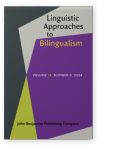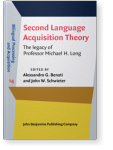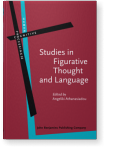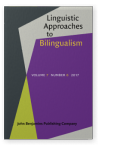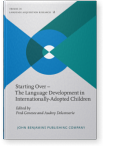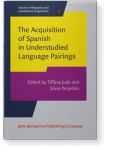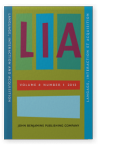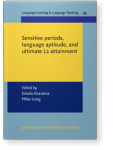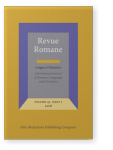Emanuel Bylund
List of John Benjamins publications for which Emanuel Bylund plays a role.
Journal
2022 Chapter 9. Age of acquisition in second language thinking Second Language Acquisition Theory: The legacy of Professor Michael H. Long, Benati, Alessandro G. and John W. Schwieter (eds.), pp. 177–196 | Chapter
Debates around age effects in L2 learning have mostly centred around the domains of phonology, morphosyntax, and lexis. In this chapter, we expand the scope to conceptual and cognitive restructuring, much in line with Long’s (1990, 2013) discussion of the limits of age effects. Drawing on an… read more
2017 Chapter 12. The psychological reality of spatio-temporal metaphors Studies in Figurative Thought and Language, Athanasiadou, Angeliki (ed.), pp. 295–321 | Chapter
Time provides essential structure to human experience. This chapter reviews the available empirical evidence for a fundamental metaphoric structure such astime is spacein figurative language and thought. The chapter is organized into three over-arching themes:Motion through time,… read more
2016 Chapter 5. Long-term language development in international adoptees Starting Over – The Language Development in Internationally-Adopted Children, Genesee, Fred and Audrey Delcenserie (eds.), pp. 125–146 | Article
The linguistic development of internationally adopted children has been studied extensively for several decades. Whereas this research has mainly concerned toddlers and pre-school children during their first years after adoption, school-age children, and adolescents, there is currently scarce… read more
2015 The Construal of Goal-Oriented Motion Events by Swedish Speakers of L2 Spanish: Encoding of motion endpoints and Manner of motion The Acquisition of Spanish in Understudied Language Pairings, Judy, Tiffany and Silvia Perpiñán (eds.), pp. 233–254 | Article
The current study investigates motion event construal in Swedish speakers of L2 Spanish. In particular, the study examines the encoding of motion endpoints and manner of motion through elicited video clip descriptions of everyday motion event situations. The results show that Swedish learners of… read more
2013 The ‘thinking’ in thinking-for-speaking: Where is it? Language, Interaction and Acquisition 4:1, pp. 91–100 | Article
According to the thinking-for-speaking (TFS) hypothesis, speakers of different languages think differently while in the process of mentally preparing content for speech. The aim of the present paper is to critically discuss the research carried out within the TFS paradigm, against the background of… read more
2013 Age of acquisition effects or effects of bilingualism in second language ultimate attainment? Sensitive periods, language aptitude, and ultimate L2 attainment, Granena, Gisela and Mike Long (eds.), pp. 69–102 | Article
One of the most robust findings in the field of SLA is the different rates of success with which children and adults achieve nativelike proficiency in a L2. Age-related differences have traditionally been explained in terms of the maturational state of the learner. Recently, however, a growing… read more
2008 Procesos de conceptualización de eventos en español y en sueco: Diferencias translingüísticas Revue Romane 43:1, pp. 1–24 | Article
This study examines the relationship between grammaticised aspect (GA) and the information structure of events in discourse. The aim is to test the hypothesis about the influence of grammaticised aspect on event conceptualization processes. The data studied consist of narratives by speakers of… read more
